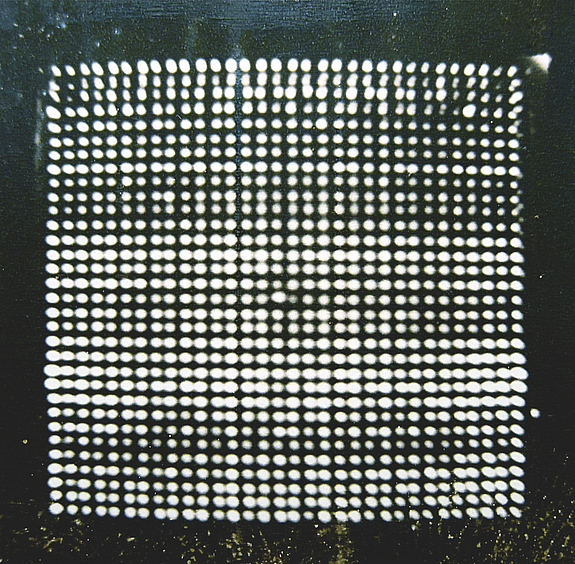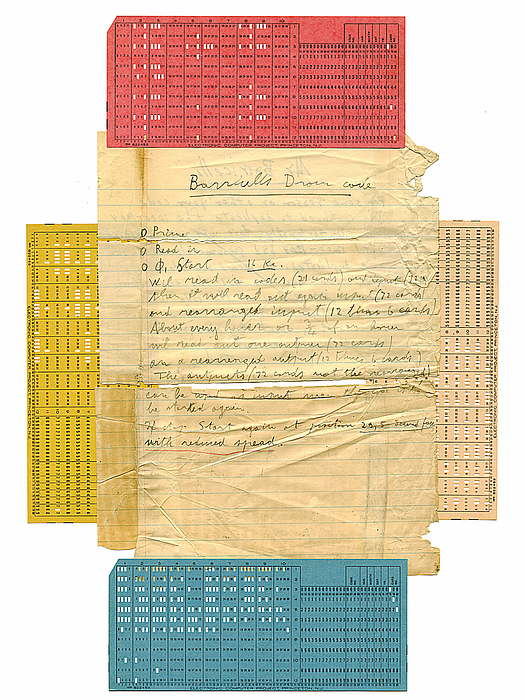Demo Idea with Slideshow


Starting in late 1945, John von Neumann, Professor in the School of Mathematics, and a group of engineers worked at the Institute to design, build, and program an electronic digital computer—the physical realization of Alan Turing’s Universal Machine, theoretically conceived in 1936. As George Dyson writes, the stored-program computer broke the distinction between numbers that mean things and numbers that do things.

Handwritten note and examples of punch cards related to Nils Barricelli’s work using the IAS computer
There are two kinds of creation myths: those where life arises out of the mud, and those where life falls from the sky. In this creation myth, computers arose from the mud, and code fell from the sky.
In late 1945, at the Institute for Advanced Study in Princeton, New Jersey, Hungarian-American mathematician John von Neumann gathered a small group of engineers to begin designing, building, and programming an electronic digital computer, with five kilobytes of storage, whose attention could be switched in 24 microseconds from one memory location to the next. The entire digital universe can be traced directly to this 32-by-32-by-40-bit nucleus: less memory than is allocated to displaying a single icon on a computer screen today.
Von Neumann’s project was the physical realization of Alan Turing’s Universal Machine, a theoretical construct invented in 1936. It was not the first computer. It was not even the second or third computer. It was, however, among the first computers to make full use of a high-speed random-access storage matrix, and became the machine whose coding was most widely replicated and whose logical architecture was most widely reproduced. The stored-program computer, as conceived by Alan Turing and delivered by John von Neumann, broke the distinction between numbers that mean things and numbers that do things. Our universe would never be the same.